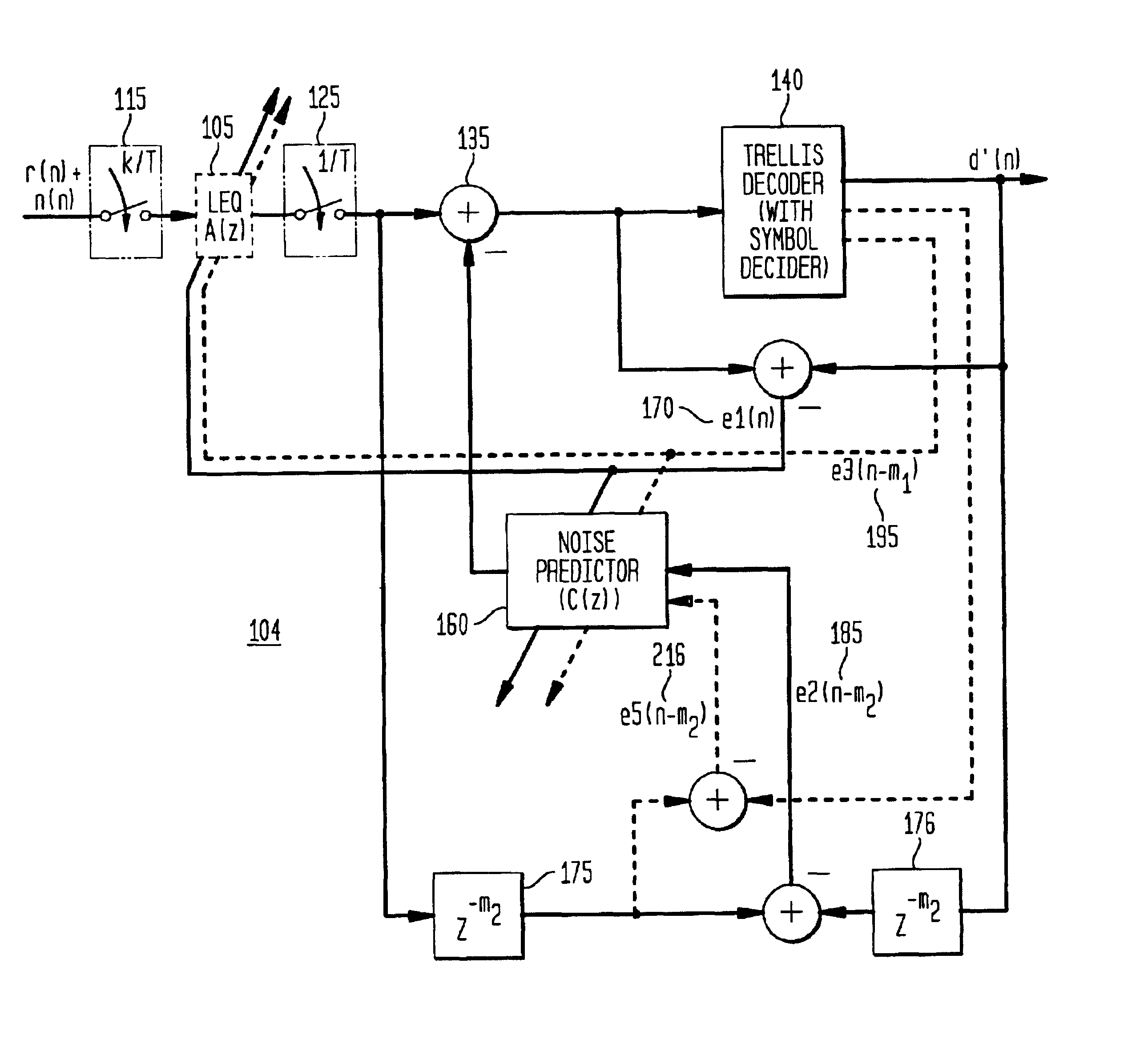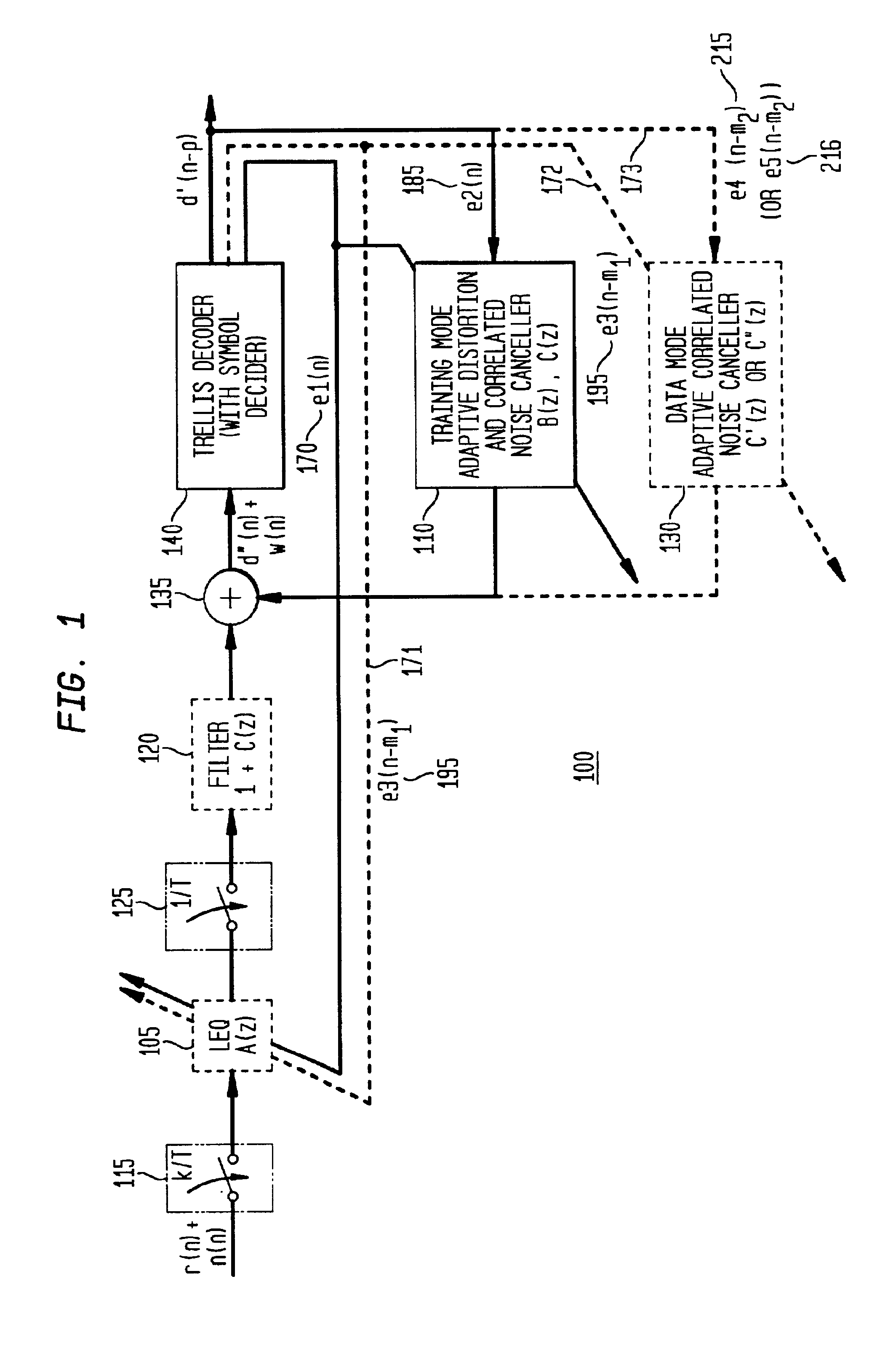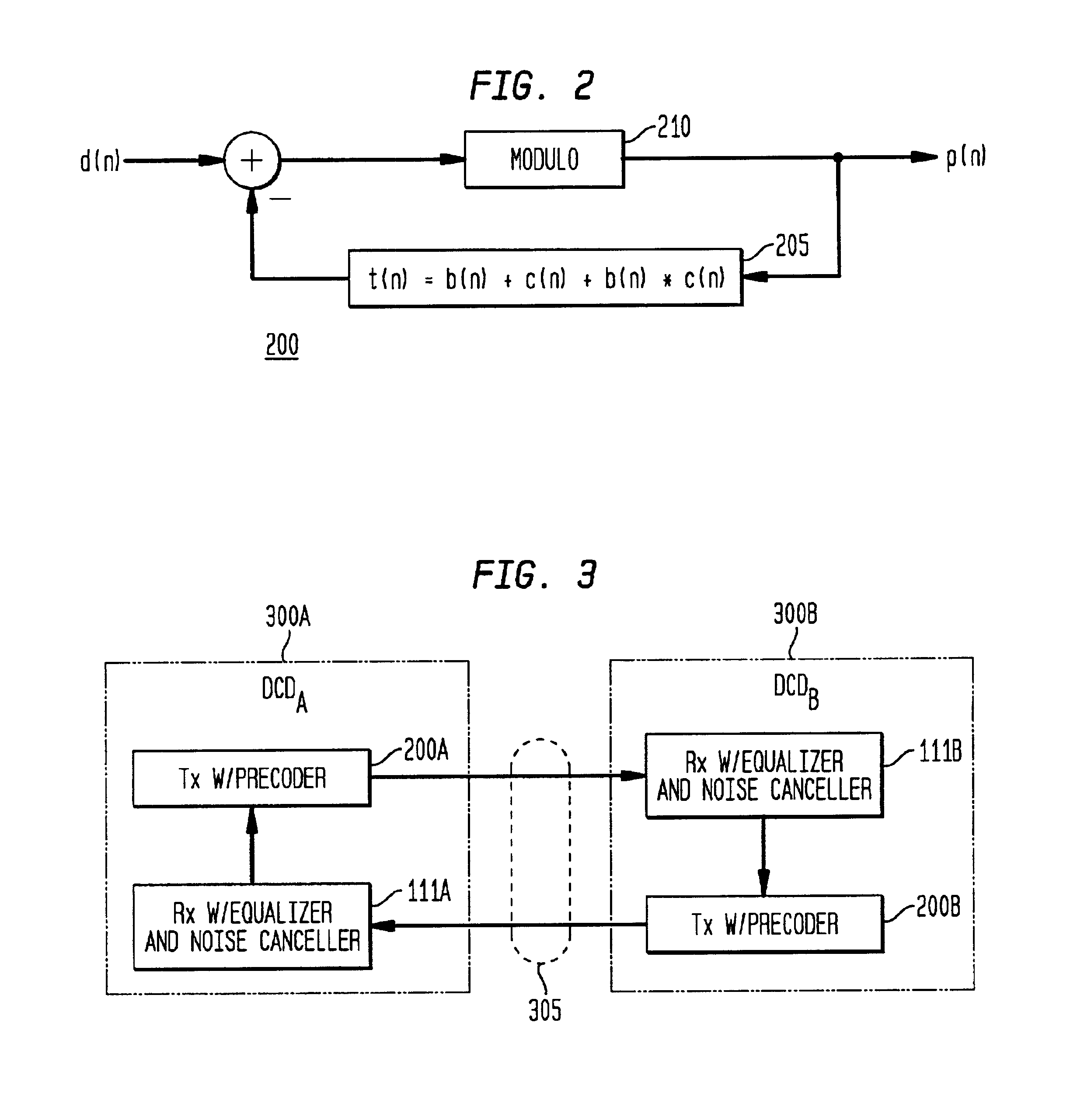Apparatus, method and system for correlated noise reduction in a trellis coded environment
a trellis coded environment and correlated noise technology, applied in the field of noise predictor or canceller devices, can solve the problems of large cross-talk impairments, very uneven noise power distribution across the frequency spectrum, and difficult high-speed data transmission, so as to reduce correlated or non-white noise, reduce correlated noise, and increase the performance of 1-2 db
- Summary
- Abstract
- Description
- Claims
- Application Information
AI Technical Summary
Benefits of technology
Problems solved by technology
Method used
Image
Examples
embodiment 100
[0033]FIG. 1 is a block diagram illustrating the preferred apparatus embodiment 100 in accordance with the present invention. Such an apparatus 100 is generally included within a receiver of a data communication device, as discussed below with reference to FIG. 3, and is preferably implemented or embodied as discussed below with reference to FIG. 8. Additional receiver (or transmitter) functionality, as known in the field of data transmission, is not separately illustrated or discussed. As illustrated in FIG. 1, the apparatus 100 integrates or incorporates equalization functionality, with a linear feedforward equalizer or filter (“LEQ”) 105, which utilizes a plurality of equalization coefficients a(n), and with a decision feedback adaptive filter (“DFB”) (separately illustrated in FIG. 4 as DFB 150), which utilizes a plurality of equalization coefficients b(n), and which is incorporated within the training mode adaptive distortion and correlated noise canceller 110. The LEQ 105 and ...
embodiment 400
[0061]FIG. 8 is a block diagram illustrating a preferred data communication device embodiment 400 of the noise canceller apparatus in accordance with the present invention. The data communication device 400 is typically coupled or connected via a channel 305 to a network, which may be any type of network, such as a local loop or a public switched telephone network (PSTN), which provides further connections to other data communication devices. The channel 305 is preferably one or more twisted pairs of copper wire, but also may be any other type of medium, such as coaxial cable or fiber optic cable. The data communication device 400 receives and transmits encoded (and modulated) data, respectively from and to one or more other data communication devices, via a network.
[0062]The data communication device 400 includes a network interface 415, a processor 410, a memory 420, a transmitter (with precoder) 430, a system interface 440, equalizers LEQ 105 and DFB 150, and noise predictor 160....
PUM
 Login to View More
Login to View More Abstract
Description
Claims
Application Information
 Login to View More
Login to View More - R&D
- Intellectual Property
- Life Sciences
- Materials
- Tech Scout
- Unparalleled Data Quality
- Higher Quality Content
- 60% Fewer Hallucinations
Browse by: Latest US Patents, China's latest patents, Technical Efficacy Thesaurus, Application Domain, Technology Topic, Popular Technical Reports.
© 2025 PatSnap. All rights reserved.Legal|Privacy policy|Modern Slavery Act Transparency Statement|Sitemap|About US| Contact US: help@patsnap.com



